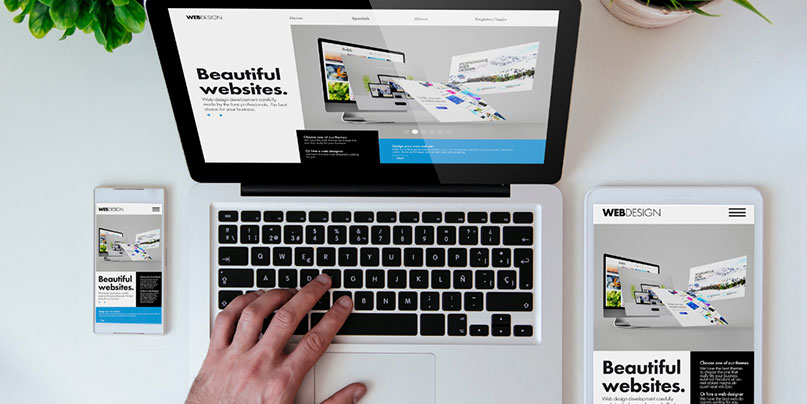More than 1.98 billion websites exist worldwide, and they are all going head-to-head for first-page rankings. SEO is essential for a website to rank higher. Everything on a website takes into account optimization that depends on SEO, from useful content to user experience (UX) design.
SEO is typically tied to the originality and relevance of the content, but it is also commonly linked to the aesthetics of the website’s design and layout. Frequently SEO is as simple as your title getting the proper length and the right keyword (one that accurately suits your content), and other times it isn’t straightforward.
Making sure a website ranks is different from simply building one. You need a carefully thought-out site design to attract, engage, and convert customers as a business owner.
Whatever approach you choose to follow, this article provides you with a straightforward blueprint for creating a website that ranks. Read on!
What Is Web Design?
The arranging and positioning of content on a website for delivery and accessibility are referred to as web design. It is a collaborative approach that uses design expertise, methods, and technology from different sectors. It involves design disciplines like web development, graphic design, and search engine optimization (SEO).
The art of web design combines functional and aesthetic features to develop your site’s framework to improve user experience. A website’s appearance and layout are determined by how it is produced. Your website will be user-friendly and appealing with good web design. Additionally, it improves how customers view your company.
Slow Take About User Interface (UI), User Experience (UX), and SEO
Contrary to popular belief, there is a close connection between UI and SEO. What happens is that when a user types in terms in a search engine, websites that have been optimized for content, design, and accessibility show up in the search engine results pages (SERPs). When a user clicks, they are taken to the website. The site’s ultimate goal is distorted when users have trouble finding what they need or experience other usability issues. As a result, they leave the site prematurely quickly.
The user experience (UX) of your website is impacted when SEO interferes with the design and functionality of the website. Search engine crawlers may struggle to retrieve the content hidden beneath a technique overloaded with unnecessary components. The website’s ranking on the SERPs will inevitably drop if the design and structure don’t satisfy optimization rules.
In order to design the entire user interaction, it is crucial to categorize the content per its usefulness, functionality, and accessibility. There will be no way for the Google bots to ignore the important information you have provided on your website once the design follows an efficient system that has been appropriately enhanced.
What Makes a Good Website Design?
Every business website needs elements to qualify as a well-designed website, regardless of its niche or visual aesthetic. The presence of these components can determine a website’s quality.
- Design or Aesthetic
People who utilize websites tend to be visually inclined. They anticipate finding appealing visual components on a website when they visit it as part of the user experience. In order to aesthetically appeal to customers, your business website must incorporate excellent design and special functions.
- Navigation
A website should be simple to use, with quick access to all relevant information. Users should have no problems accessing your website.
Landing systems that direct users to pages related to their searches are integrated into effective web design. In doing so, reduces navigation effort and increases engagement.
- Branding
Your brand should be clearly and engagingly reflected in effective website design. The site’s visual and content components should be able to communicate with visitors. The reputation and branding of your company are improved as a result.
Guidelines For An SEO-Friendly Website
UI/UX and SEO are strongly associated. A website must be created that embraces SEO and adheres to Google standards and other search engine best practices.
Your website’s profitability grows when it achieves a high-ranking rate. Businesses with high-ranking websites see better returns for their digital marketing and branding efforts. But if the appropriate tactics aren’t in place, a website won’t always convert visitors.
Here are a few improvements you can put into practice in your web design to achieve the sweet spot on the top page of the SERPs:
- Build a Simple and Direct Website Structure
One factor that significantly improves SEO is a website’s layout. Simple element layouts and structures allow search engine crawlers to easily navigate from one page to the following and index those sites. It will increase the distribution of your links across various websites.
Your readers must be able to navigate your design quickly, and it must have modest inner pages and clear and witty call-to-actions (CTAs).
- Step Up the Graphics
Beyond solely the content, SEO has started to have a significant impact on other website components. Additionally, SEO incorporates multiple visual mediums to promote rankings. High-quality images and videos are used throughout a website as a component of effective web design.
Optimize any images you plan to use in your website design. The best part is that you may utilize various methods to maintain optimum aesthetics without sacrificing overall quality. Additionally, ensure the visuals you use align with the website’s purpose.
- Speed Up the Page-Loading Time
If the page load time goes past three seconds, your SEO efforts will suffer significantly. The reviews decrease to 11% even if your page speed is prolonged by a second. Additionally, it reduces both the user experience and your conversion rates.
Choosing a reputable web host, selecting high-quality compressed graphics, disabling the auto-play videos, and utilizing content delivery networks will all support you in speeding up your site.
- Designing Accessible Spaces
A website’s conversion rates and search engine position will suffer if it has poorly designed features that drive customers away. Your website needs to be easily found on all different browsers and adaptable enough for all users. Additionally, new visitors will abandon the site earlier than expected if your website frequently crashes or loads slowly. All of these techniques harm the SEO of your website.
Avoid heavy elements that restrict visitors from utilizing the site, such as large blocks of text, hidden hyperlinks, flash components, and other heavily loaded features.
- Add Social Media Badges
Web designs with social media sharing buttons are supported by SEO. The rationale is that expanding the sharing options on your website gives your content a visibility boost that SEO can’t ignore. This feature will lengthen visitors’ dwell time on the site and increase their levels of engagement.
Key Takeaway
Having a well-made, helpful website has many advantages for companies. With its target audience, a website will assist your firm in establishing a professional presence, increasing credibility, and fostering trust. You’ll be able to boost digital marketing without needing to make a significant financial commitment. Finally, you can increase engagement and conversion rates when your website is optimized and attractive to the eye.
Not everyone has the skills necessary to design and test out website architecture. No more worries! Recruit reputable professionals from Clear Choice Marketing Group (CCMG). You stand a better chance of gaining noticeably more traffic, delighted customers, and enhanced customer relations if you build it user-centric and from professionals.
Get in touch with CCMG web designers and SEO specialists now, and let’s start working on your well-deserved spot in Google’s search pages!














